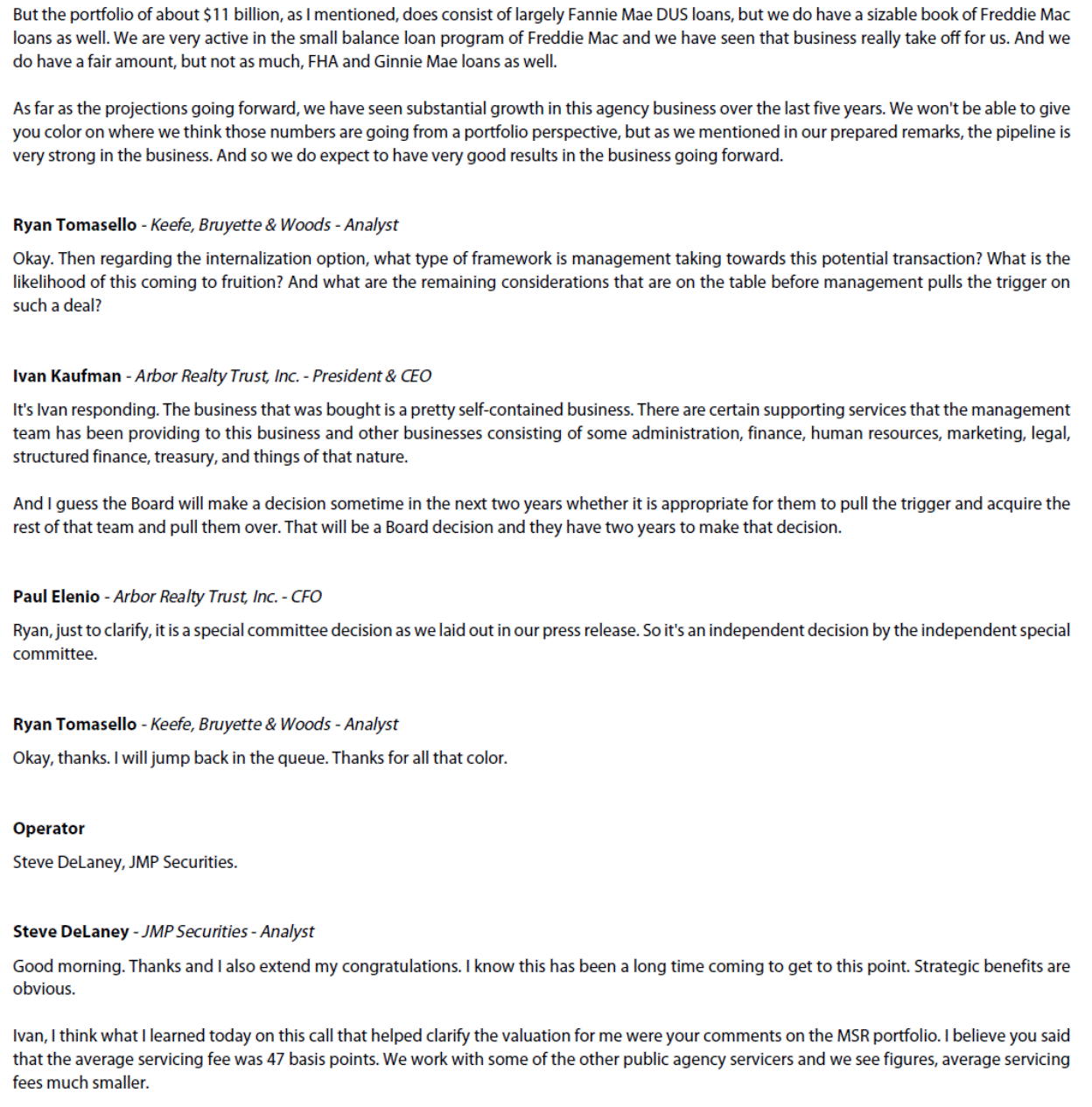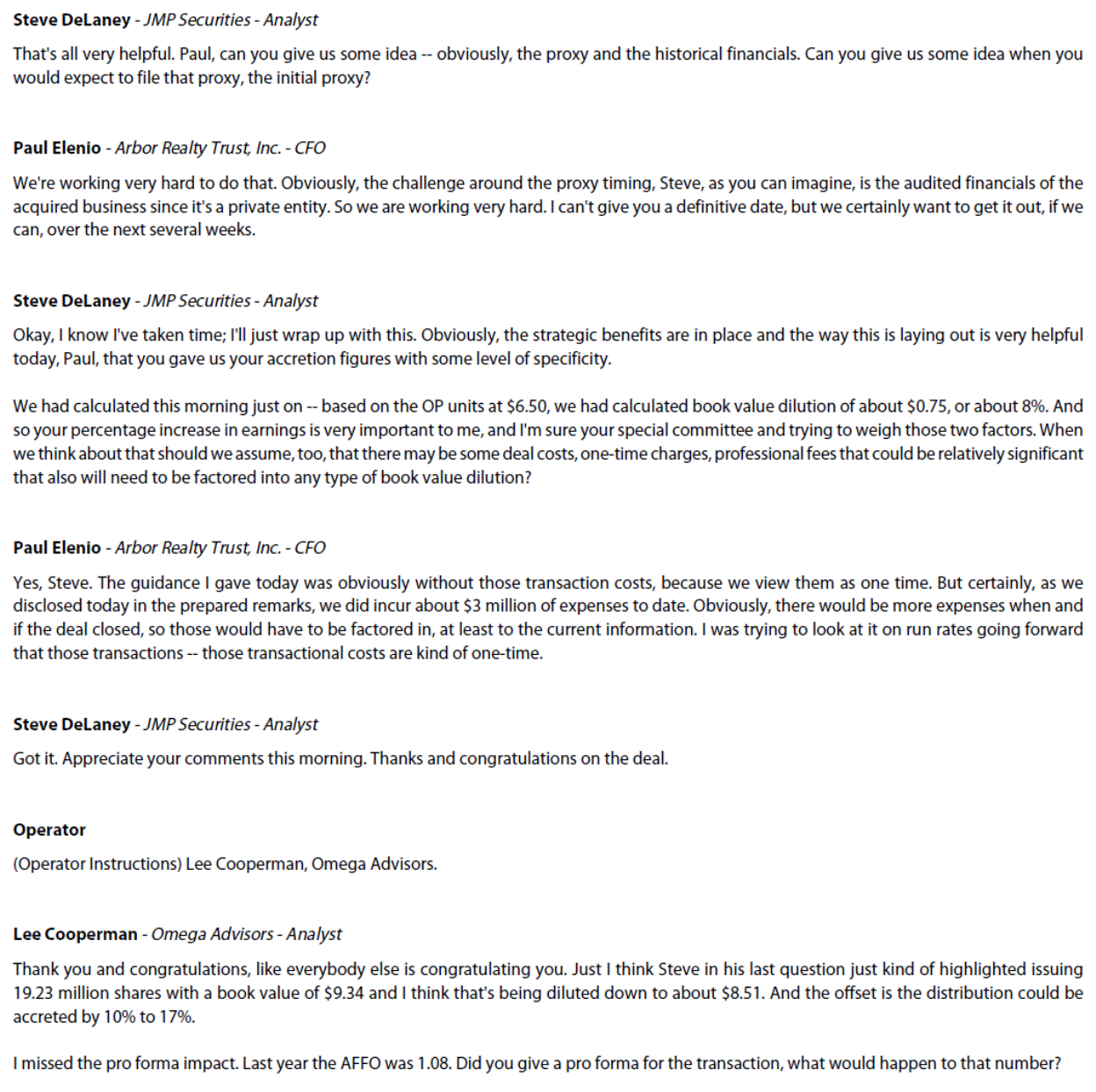Could you comment on why your average fee is higher? Does this have something to do with small balance loans versus larger loans? Any color you could give around the 47 bps would be very helpful to me, thanks. Ivan Kaufman - Arbor Realty Trust, Inc. - President & CEO Sure, I guess the niche that Arbor has and that both the REIT as well as the agency platform is we focus on small balance loans. Our specialty is in the $5 million to $25 million area with a very, very significant presence in the $1 million to $5 million area. We are probably the number one provider of small balance loans in the country and we were the number one lender for Freddie Mac in 2015. The smaller balance loans tend to have a little bit of a larger servicing number to them. It's an area that we find to be a little less competitive and, therefore, it works very well for us. The larger loans, the larger you get, the smaller the servicing fee and that's how we get to a larger number. In addition, our portfolio is very heavily weighted to Fannie Mae, where it's a bigger servicing fee as opposed to Freddie Mac. Steve DeLaney - JMP Securities - Analyst Right. And you have your loss sharing there as well, which you need to be compensated for. I guess the two drivers to get to $200 million estimated value. Paul mentioned an average remaining term of seven years and I think you've got some prepay protection around those loans. The other factor, of course, is the discount rate that you use to discount the forward cash flows. Can you comment on sort of a range of what is an appropriate discount rate for that type of an asset in your mind? Paul Elenio - Arbor Realty Trust, Inc. - CFO Yes, Steve, it's Paul. We will be careful because what we have to disclose in our proxy, but normally I think in the industry you see ranges of discount rates anywhere from 12 or 13 all the way up to 15 depending on the type of portfolio. As you know, Steve, unlike the resi business, CPRs and PSAs don't play a huge role, or as big a role, in valuation of servicing as they do in multifamily because of the prepayment protection that is afforded. With the Fannie Mae loans especially. So the ranges of discount rates, we've seen a lot of different ranges. There are firms that do this for a living. You normally see them anywhere from 12 to 13 to 15 when valuing an overall portfolio. However, from our chair, this is a very stable cash flow, very recurring cash flow and it's prepayment locked out, so that's very important component. Ivan Kaufman - Arbor Realty Trust, Inc. - President & CEO Steve, also I just want to note that these portfolios don't actively trade in the market. We wish they did. We would be an active buyer, because what you have in part of these portfolios is also a customer base. And that customer base has a lot of value. There's not a lot of value put on them in a general transaction, but the customers that come with this create recurring opportunities in the future. And the other thing in this kind of market with low interest rates there's very, very little value put on the escrow balances and the escrow balances in a rising market have significant economics. So you have the discount rate, which people put different numbers on, and that's mathematical, but you have the intangibles of the customer base. And then the factor, of course, is the hedge of the escrow balance in the event of a rising rate environment. Paul Elenio - Arbor Realty Trust, Inc. - CFO Steve, as well as the portfolio grows, you obviously get huge economies of scales on cost. So depending on the size of the portfolio, you can see higher or lower values because of the efficiency of the cost structure.













